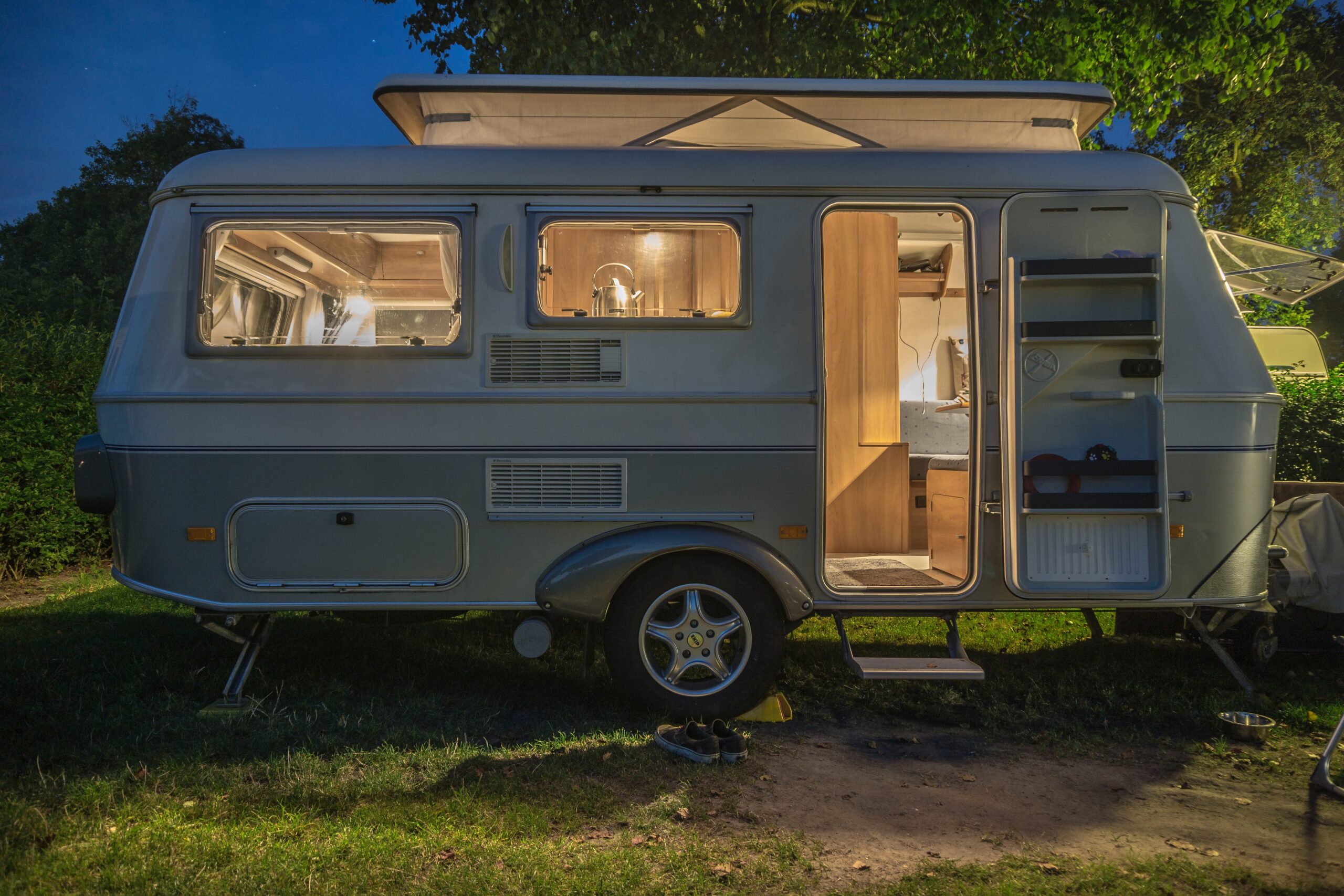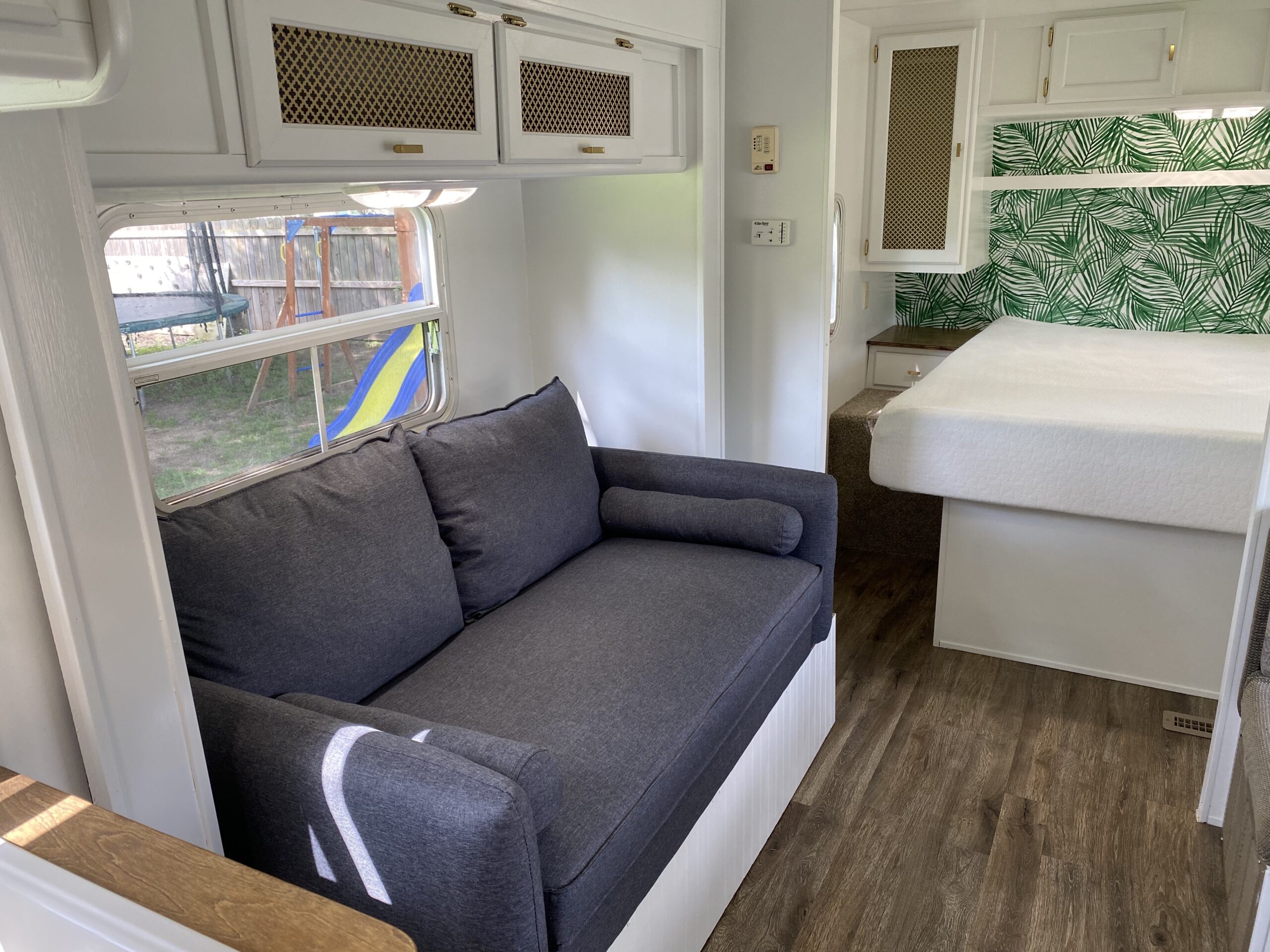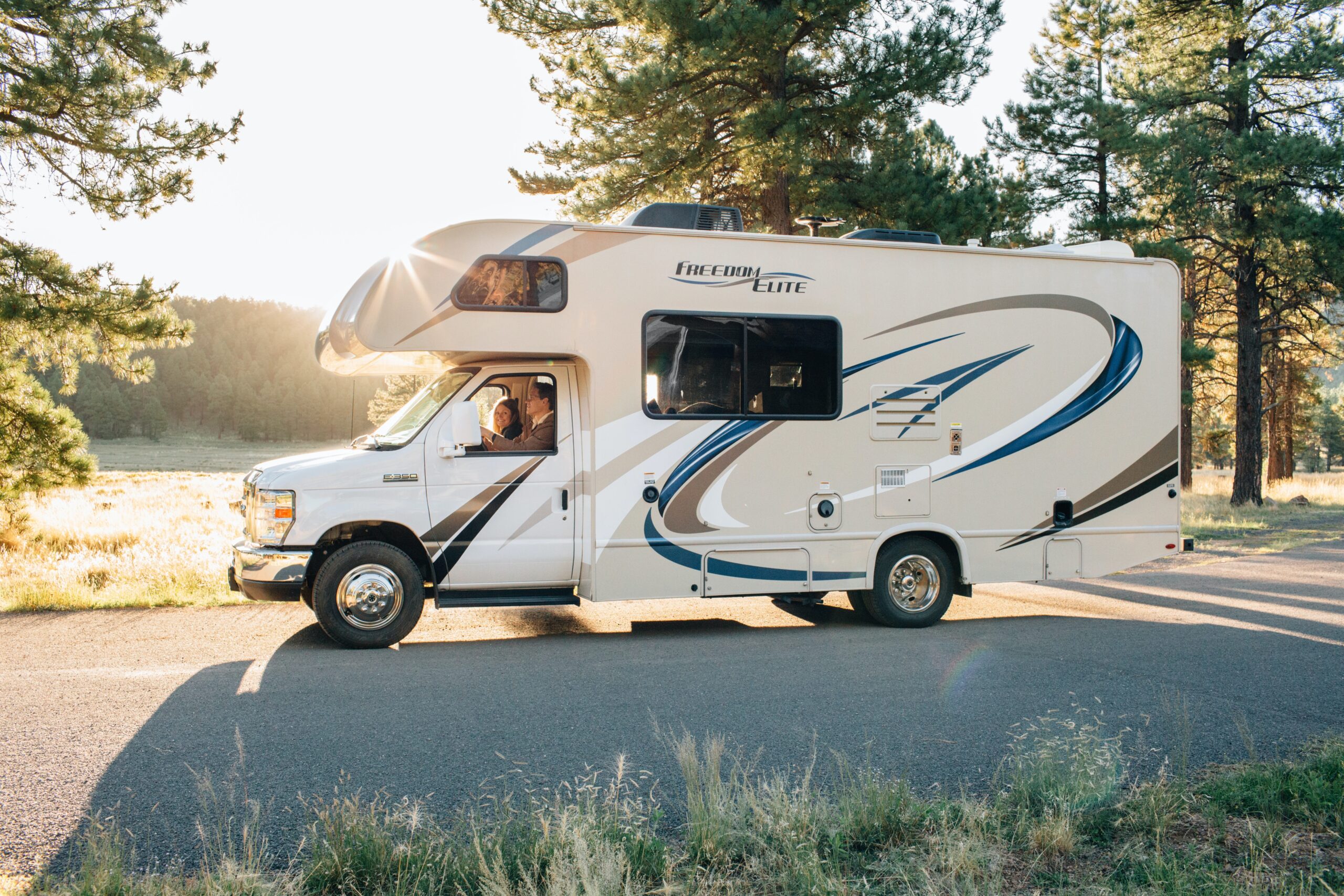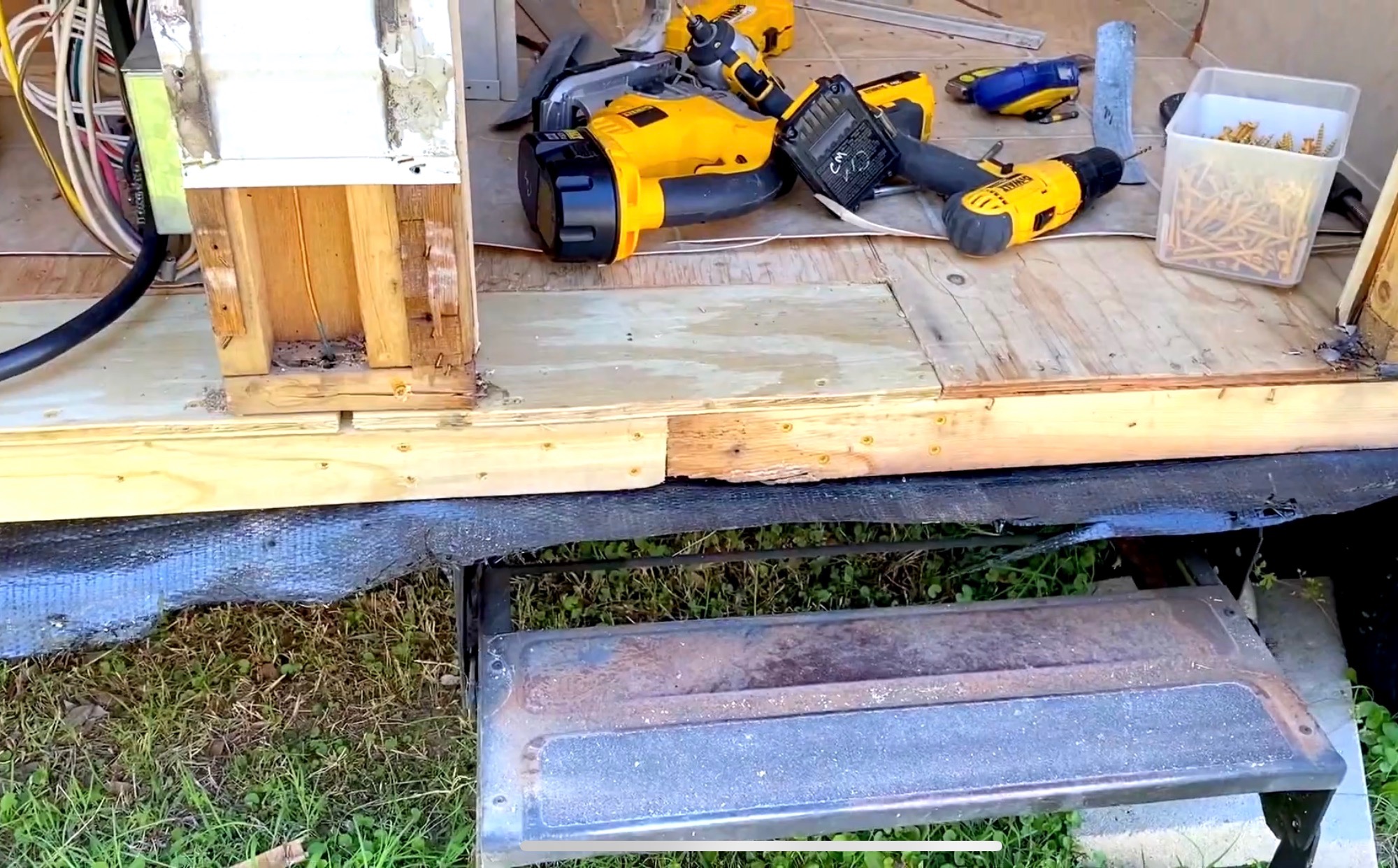Leveling an RV or camper trailer is one of the most fundamental tasks of hitting the road. There are “basics” of RVing everyone should know and this is one of those topics.
Remember, this article is for leveling without an auto-leveling system. We are using elbow grease and doing things the old fashioned way. If you have auto-leveling, I’m jealous.
Despite how foundational manual leveling is, there are a lot of people who still struggle with it. With that in mind, we thought it would be good to offer some guidelines or tips you can follow to make the process easier.
Why level an RV?
Helps you sleep
There’s no doubt about it, trying to sleep on any surface that’s unlevel can create issues. Unlevel sleep can cause headaches, bodily aches, discomfort, and all-around restlessness.
How many times have you slept with your head downhill (bad choice) only to wake up with a headache? Sleeping with your head uphill helps, but it can still feel unnatural.
Side to side “unlevelness” can be even worse. It can cause your body to want to roll in extreme cases and as a response, your muscles, etc., tense up to prevent the unnatural motion. This will result in soreness and aches in some instances.
All of this ends up resulting in a bad night of sleep. You are on the road to rest and relax, not the opposite. It’s best to avoid these unlevel situations at all costs.
Ensures accurate tank measurements
Your rig probably has a gauge that displays the “levels” of each of your tanks, freshwater, gray water, and black water. I know mine does, and it’s something a lot of folks depend on to know when they need to dump or fill up.
These gauges don’t offer a lot of precision, in some cases, and being unlevel does not help. There’s no way to tell how much it will mess with accuracy, but it does. This can be a problem if those gauges are something you count on.
Helps your refrigerator work properly
If you ever set up and camped with your rig unlevel, you may have noticed your refrigerator struggling to keep cool. You’ve probably popped open the door to find things slightly warmer than they should be. This is a problem.
We don’t need to get into the technical aspects of it, but let’s just say it is bad for your fridge as it struggles to work properly. This going to cause it to consume more energy, and lose efficiency. The older your fridge, the more likely it is to be affected by being unlevel.
Prevents slide issues

Most manufacturers have a section in the owner’s manuals recommending the RV be level prior to extending slides. This is important and often overlooked.
Think about it, if your rig is unlevel and you extend your slides, it is going to put unnecessary strain on the mechanical components. Things can bind up and add unneeded stress causing premature wear.
Leveling prior to extending the slides creates a solid base for your slide and equipment to work properly.
Biggest obstacles when trying to level an RV
Unlevel ground
Setting up on unlevel ground can be a huge obstacle when leveling. It creates extra work and requires you to have extra equipment to assist with leveling.
If you have no choice but to set up on unlevel terrain, you are going to want to use leveling blocks to aid in the process. These can be a lifesaver in situations like this. We will discuss leveling blocks a little more below.
Using stabilizers
Stabilizer jacks are not meant for leveling. They are meant for stabilizing. They add support and prevent shaking. This adds to the overall experience.
Keep this in mind as we discuss the leveling process below.
How level should an RV be?

This is one of those topics that has a wide variety of answers and is subjective at best. You will hear anything from 1-3 degrees, which some folks say is represented by “half a bubble” on your level.
The problem with this is that there are a lot of factors in determining how level your particular rig is…including length.
While folks like to throw around recommendations, I say it should be as perfectly level as you can get it. But don’t let it ruin your experience by consuming large amounts of your time.
You will get better and faster by following the steps below.
How to level an RV or camper trailer
STEP 1: Choose your location
Leveling your RV starts with backing or pulling into the site where you are setting up. The idea is to park on the most level ground available. This can sometimes be hard, so you may have to check things out on foot. Once you have an idea of where you want to set up, back or pull your camper into place.
Once you pull into place, hop out and check whether or not your rig is level from side to side. This is an important step. If not, it may be time to use some leveling blocks to aid in the process. If you don’t have leveling blocks you may have to get creative.
Keep in mind, you may be able to get somewhat more level just by moving your rig forward or backward. Unfortunately, this can sometimes mean you may have to readjust totally by pulling back out so you can back in again.
STEP 2: Chock your wheels and unhook tow vehicle
Now that you are parked it is time for the next steps. The first thing you want to do is chock your wheels. This is an extremely important step prior to unhooking from your tow vehicle.
Also, be sure to use legitimate wheel chocks and don’t try to improvise. You should also avoid setting up on any sort of surface that will compromise the effectiveness of your chocks. Think of gravel, sand, etc.
You also want to make sure you chock the wheels on both ends to prevent both forward and backward movement. Now that the wheels are chocked, unhook your tow vehicle and get ready for the next step.
STEP 3: Level from front to rear
Now that you are unhooked, check the trailer to see how level it is from front to rear. You will obviously need to use a level to do this.
You can use the tongue of your camper, just inside the entry door on some rigs, or any other area that has a flat surface suitable for your level.
Get reading from the level and use your tongue jack to make the necessary adjustments. You should be able to get pretty close to level using this technique.
STEP 4: Lower stabilizer jacks
Now that you are level from side to side and from front to rear, lower your stabilizers. Remember, stabilizer jacks are not meant to level your rig, they are meant to stabilize it.
Lower them until they are firmly on the ground, but make sure you do not lift the RV at all. Once they make contact, you will feel the tension increase and the base plates will settle a bit. A couple of extra turns will add stability without lifting.
You may also consider using some jack pads or leveling blocks to help add a broader footprint to your stabilizers. This can really assist the process, especially in softer ground.
Conclusion
Congratulations, you’ve successfully leveled your RV. It’s really not that hard, but a lot of people make the mistake of using the stabilizers to try to level. By doing this, they typically rotate around the camper adjusting one at a time, never getting anything level.
Follow the process above and you will have a faster and more pleasant experience. This will add to everyone’s enjoyment and will make sure you get started on the right foot.






